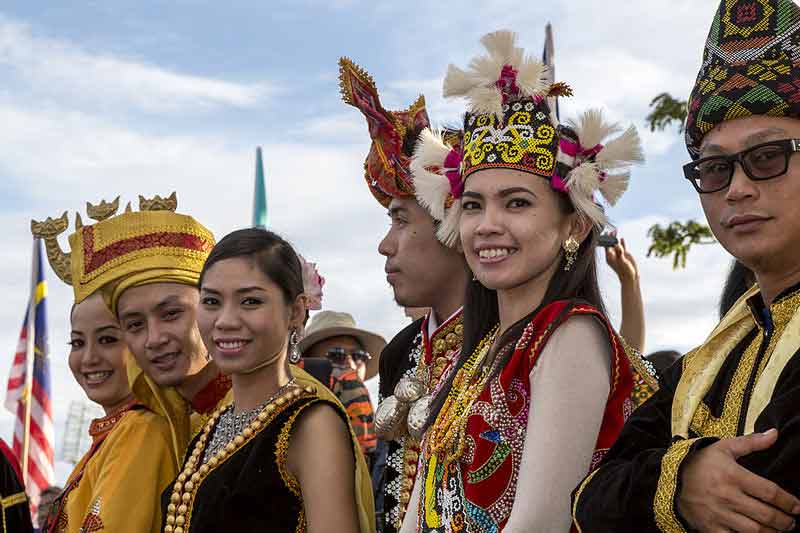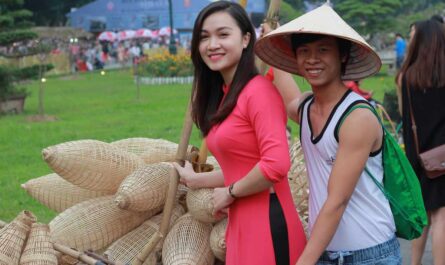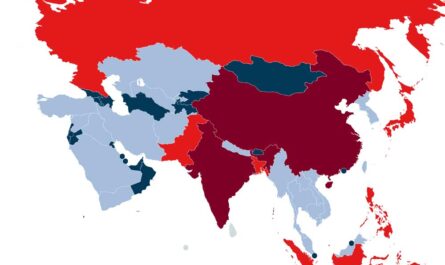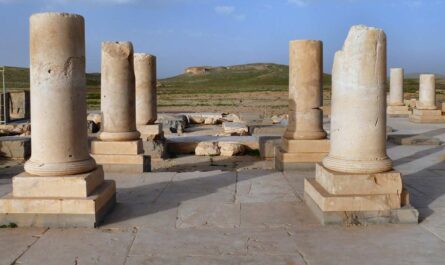There are plenty of fun facts about Malaysia that surprise travelers. Malaysia is a country of opportunities, nature, culture, thriving, and history. Islam is the official religion of Malaysia, and the majority of the population practices Sunni Islam. However, the country is known for its religious diversity, with significant communities of Christians, Buddhists, and Hindus living harmoniously. Malaysia boasts a breathtaking natural landscape, with lush rainforests, pristine beaches, and towering mountains. The country is home to a diverse array of flora and fauna, including the endangered orangutans in Borneo and the tigers of Peninsular Malaysia. The Taman Negara National Park is one of the oldest rainforests globally, offering opportunities for eco-tourism and wildlife exploration. In this article, I am going to share some of the fun facts about Malaysia.
Fun Facts about Malaysia: Pasts, Present, Future
Malaysia offers a plethora of attractions, including the iconic Petronas Towers, the UNESCO-listed George Town, and the stunning beaches of Langkawi. Malaysia is a vibrant and diverse country located in Southeast Asia, known for its rich tapestry of nature, culture, and history. The nation is comprised of two main regions, Peninsular Malaysia and East Malaysia, situated on the island of Borneo. Here is an overview of Malaysia across various aspects: Here are some of the fun facts about Malaysia:
1. Malaysia Quick Facts
The allure of this confinement ritual lies not only in its adherence to cultural norms but also in the perceived luxury it embodies for many women. Despite the challenges, the confinement period becomes a cherished interlude for mothers, fostering a connection with age-old practices that continue to define the cultural identity of Malaysia. This facet of Malaysian life, designed to nurture both mother and child, weaves a narrative of tradition, care, and resilience.
- Life expectancy: 75.30
- Total Population: 32,772,100
- Capital: Kuala Lumpur
- Highest Mountain: Mount Kinabalu at 4,095 meters (13,435 ft)
- Total Area: 330,803 km2
- Time zone: UTC+8 (MST)
- Country Number/Prefix: +60
- Largest Lake: Tasik Kenyir
- National Day: 31 August
- Government: Federal parliamentary elective constitutional monarchy
- National song: “Negaraku”
- Country Code: MY
- Yang di-Pertuan Agong: Abdullah al-Haj
- Currency: Ringgit (RM) (MYR)
- Official language: Malay
- Religion: Islam
2. Nasi Lemak: Malaysia’s Aromatic Culinary Jewel
Malaysia, a nation rich in cultural diversity and gastronomic treasures, boasts Nasi lemak as its crowning culinary jewel. This delectable national dish transcends mere sustenance; it is a symphony of flavors meticulously crafted to tantalize the taste buds. Imbued with the essence of coconut milk, the aromatic rice takes center stage, enveloped in a fragrant embrace. Traditionally, it is cocooned within a banana leaf, adding a touch of eco-friendly sophistication to the presentation. Despite its versatile appeal, Nasi lemak is an undisputed breakfast champion, captivating Malaysians and leaving an indelible mark on the nation’s culinary identity.
3. Triumph Over Communism: The Malayan Emergency
In the annals of history, Malaysia stands as a testament to resilience and triumph in the face of adversity. The Malayan Emergency, a harrowing 12-year chapter, unfolded as a guerrilla warfare theater against Communist forces. The relentless struggle for sovereignty reached its crescendo in 1960 when the flames of communism were finally extinguished. This epoch, etched in the nation’s collective memory, is aptly named the Malayan Emergency—a period when Malaysia emerged victorious, solidifying its stance against the specter of Communism that loomed large.
4. Social Networking Prowess: Malaysians and Facebook
In the digital age, Malaysia distinguishes itself not only for its physical triumphs but also in the virtual realm. A fascinating snapshot of social connectivity emerges from a 2010 survey, revealing Malaysia’s prowess in the world of Facebook friendships. Malaysians, with an astonishing average of 233 friends, claim the title of the most socially connected denizens. In stark contrast, the Japanese, known for their cultural nuances, exhibit a remarkable selectiveness with a mere 29 friends. This intriguing disparity underscores the diverse social landscapes traversed by nations in the ever-evolving landscape of digital connectivity.
5. Malaysia’s Citizenship Milestone
In the annals of Malaysian history, a noteworthy chapter unfolded in 1957 when the then 17-year-old Kok Shoo Yin became the trailblazing non-Bumiputera to be accorded the prestigious honor of citizenship. This landmark event holds profound significance, representing a poignant departure from prevailing norms and signaling the nation’s commitment to inclusivity. The granting of citizenship to Kok Shoo Yin stands as a testament to Malaysia’s evolving sociopolitical landscape during that era, marking a pivotal moment in the nation’s journey toward fostering a diverse and harmonious society.
6. Tualang: A Towering Marvel in Malaysian Wilderness
Nestled within the verdant embrace of Malaysia’s lush tropical landscape stands the awe-inspiring Tualang tree, a botanical giant that proudly claims the title of being one of the tallest tropical timber specimens on the planet. With its imposing presence, the Tualang boasts a base diameter that surpasses an impressive 10 feet, while its towering height reaches an astonishing 262 feet. This arboreal wonder not only contributes to the rich biodiversity of Malaysia but also serves as a testament to the country’s unique ecological heritage. The Tualang tree encapsulates the essence of Malaysia’s natural grandeur, offering a breathtaking spectacle that captivates both locals and visitors alike.
7. Penang Jewish Cemetery: A Testament to Southeast Asian History
Nestled amid the historical tapestry of Malaysia, the Penang Jewish Cemetery stands as a silent witness to the country’s diverse cultural heritage. Revered as the oldest Jewish cemetery in Southeast Asia, its hallowed grounds encapsulate a legacy that spans centuries. The gravestones, weathered by time, tell the tales of a community that found its home in this corner of the world. Each inscription echoes the struggles, triumphs, and enduring spirit of a people who have contributed to the vibrant mosaic of Malaysian history. The Penang Jewish Cemetery, with its serene ambiance and historic resonance, beckons those who seek to unravel the threads of a bygone era.
8. Punjabis in Malaya: Pioneers and Political Prisoners
The annals of Malaysian history reveal a chapter marked by the arrival of the first Punjabis, whose presence bore witness to both resilience and political upheaval. In the crucible of Malaya, these early Punjabi settlers were not merely pioneers in a foreign land but also political prisoners, navigating a complex terrain of challenges and opportunities. Their narrative weaves into the broader tapestry of Malaysia’s multicultural identity, reflecting the intricate interplay between historical circumstances and the forging of a new collective destiny. The first Punjabis in Malaya left an indelible mark, contributing threads to the intricate fabric of Malaysia’s social, political, and cultural evolution.
9. The Inception of National Service
Delving into the socio-political tapestry of Malaysia, a distinctive feature emerges—the initiation of the National Service program in the 1960s. This inaugural endeavor marked a paradigm shift in the nation’s approach to civic engagement and national identity. By delving into the historical context surrounding the program’s genesis, one gains insight into Malaysia’s concerted efforts to foster a sense of unity and shared responsibility among its citizens. The inception of the National Service program, a reflection of the country’s dynamic evolution, embodies the aspirations of a nation forging ahead into a new era.
10. Gunung Mulu National Park: Nature’s Grandeur Unveiled
For those with an appetite for awe-inspiring natural wonders, Malaysia offers a jewel in the form of Gunung Mulu National Park, nestled in Sarawak, Borneo. An intriguing facet of this natural haven was unveiled in 1981—the world’s largest underground cave chamber. Venture into the depths of Gunung Mulu, and you’ll find yourself standing within a colossal subterranean expanse, spanning an astounding 1.66 million square feet. The magnitude of this cavernous wonder is such that it could comfortably accommodate five rows of eight Boeing 747 airplanes, neatly aligned nose to tail. The immensity of Gunung Mulu’s underground marvels places Malaysia on the global map of natural wonders, showcasing the nation’s diverse and unparalleled landscapes.
11. Teh Tarik: A Malaysian Culinary Tradition
Teh tarik, a term that translates to “pulled tea,” stands as an emblematic representation of Malaysia’s rich cultural tapestry. This captivating national drink is not just a mere beverage; it is a spectacle, a performance art carried out by skilled Mamak males. Positioned at a height of approximately one meter, tea is gracefully poured from one cup to another, traversing the mid-air expanse with a mesmerizing precision that leaves spectators in awe. Originally conceived as a pragmatic approach to allowing the tea to settle, this unique ritual has evolved into a distinguished Malaysian art form, a delightful fusion of tradition and modernity.
12. Bahasa Malay: A Scriptless Language with Islamic Roots
In the linguistic realm of Malaysia, Bahasa Malay reigns supreme as the official language. However, it carries a distinct peculiarity— it lacks a written script of its own. The narrative of Bahasa Malay’s textual expression is intertwined with the arrival of Islamic missionaries, who not only brought the teachings of the Quran but also a writing system adaptable for transcribing Malay with a remarkable degree of accuracy. This script, known as Jawi, emerged as the conduit through which the linguistic essence of Bahasa Malay found its written form, creating a fascinating interplay between religion, language, and the written word.
:max_bytes(150000):strip_icc()/nasi-campur-685464738-5aff60d0a474be00376262d8.jpg)
13. Pointing Etiquette: The Art of Non-Verbal Communication
Within the social fabric of Malaysia, an intriguing facet of communication etiquette unfolds—a cultural nuance that deems it impolite to point directly at individuals or objects using the index finger. This idiosyncratic custom invites an alternative approach to non-verbal communication. Instead of the straightforward index finger, Malaysians employ a subtle gesture: a bent index finger or thumb is utilized for pointing—or rather, knuckling—in the intended direction. This distinctive practice not only reflects the nation’s commitment to courteous interactions but also adds a layer of intrigue to the mosaic of Malaysian social conventions.
14. Malaysian Longhouses: Communal Living in the Jungle
Nestled amidst the lush greenery of Malaysia, the traditional longhouse stands as a testament to communal living in the heart of the jungle. Affectionately known as the “condominiums of the jungle,” these remarkable structures boast a staggering 20 to 25 doorways, with some expansive longhouses boasting an astonishing 60 entrances. Each doorway serves as a portal to a distinct household, and it is not uncommon for numerous families to coexist harmoniously under the same elongated roof.
Embodying a unique sense of unity, these longhouses paint a vivid picture of interdependence, where neighbors are not just a stone’s throw away but share the very fabric of their living spaces. The intricate social dynamics within these longhouses create a fascinating tapestry of relationships, forming a tight-knit community that navigates the challenges of daily life in the heart of the Malaysian jungle.
15. Passport Necessity: Navigating Immigration Laws in Sabah and Sarawak
While traversing the diverse landscapes of Malaysia, the journey between the states of Sabah and Sarawak and the Peninsular region unveils a nuanced aspect of Malaysian travel—immigration laws with distinctive regional flavors. Unlike the seamless transitions experienced within Peninsular Malaysia, venturing into Sabah and Sarawak demands the companionship of a passport for all Malaysians. This peculiar requirement stems from the fact that these states possess their immigration regulations, adding an extra layer of bureaucratic intricacy to the otherwise routine act of crossing regional borders.
The need for a passport not only underscores the administrative complexity but also serves as a symbolic reminder of the multifaceted identity of Malaysia—a nation characterized by its geographical diversity and the unique legal frameworks that govern its constituent states.
16. Cinematic Gravity: The Quirky Gravity of Malaysian Movie-Watching
In the realm of Malaysian entertainment, particularly the silver screen, a peculiar ethos governs the act of movie-watching. In stark contrast to the casual atmosphere often associated with cinema outings in other parts of the world, Malaysia takes a decidedly serious stance on the cinematic experience. In this cinematic landscape, there is no room for levity or casual amusement; instead, the act of watching a movie is approached with a gravitas that is both intriguing and distinctive.
As the lights dim and the screen comes to life, Malaysian audiences enter a realm where laughter and lightheartedness take a back seat. The collective hush that descends upon the theater is a testament to the cultural significance attached to cinematic storytelling. Far from a mere form of entertainment, watching a movie in Malaysia becomes an immersive experience, a cultural journey where the audience is compelled to engage with the narrative on a profound level.
17. Tidong Wedding Ritual: A Quirky Tradition in Sabah, Borneo
The Tidong people of Sabah, Borneo, engage in a marriage ceremony ritual that stands out as an intriguing cultural practice. Beyond the conventional vows and celebrations, this unique tradition takes an unusual turn. Following the joyous ceremony, the newlyweds embark on a challenging endeavor—they are forbidden from using the bathroom for an entire three days and nights. Yes, you read it right—three days without relieving oneself! This peculiar post-wedding prohibition is undeniably the most perplexing detail on the list of fascinating facts about Malaysia.
18. Pregnancy Taboos: Superstitions Shaping Maternal Behavior
Delving into the rich tapestry of Malaysian traditions, pregnant women in the country follow a set of intricate taboos. These cultural norms dictate that expectant mothers must refrain from engaging in activities that could potentially lead to birthmarks or deformities in their unborn child. This includes avoiding actions such as killing, tying, or mangling anything during their pregnancy. Furthermore, pregnant women are prohibited from carrying fire or water behind their backs and are advised against gazing upon anything deemed ugly or horrifying. These customs, deeply rooted in superstition, add a layer of mystique to Malaysia’s cultural landscape and stand as one of the top ten intriguing facts about the country.
19. Unconventional Engagement Rings: A Symbolic Placement
Malaysian matrimonial customs unveil another captivating facet with an unconventional twist on engagement rituals. Malay brides, during the engagement ceremony, do not place their rings on their fingers, as is customary in many cultures. Instead, the engagement ring is delicately positioned on the fourth finger of the right hand by a senior female relative of the groom. This departure from the conventional placement ritual, orchestrated by the groom himself, adds a unique touch to the proceedings. This distinctive practice elevates the engagement ceremony’s symbolism, making it a noteworthy detail among the diverse array of facts about Malaysia.
20. Japanese Invasion and Bicycle Pilferage in Malaysia
On the fateful day of December 6, 1941, a date indelibly marked in the annals of history, the Japanese forces executed a synchronized invasion of both Malaysia and Pearl Harbor. Their audacious move, a military ballet of aggression, saw them making landfall at Khota Baru. An intriguing nuance of their relentless advance was the peculiar penchant for bicycles – as they swept through each city en route to Singapore, they brazenly purloined these two-wheeled contraptions, fashioning a bizarre convoy that traversed the Malaysian landscape in a mere 45 days. The synchronization of their assault and the improbable conveyance of stolen bicycles in this invasion form a paradoxical footnote in the cool historical facts about Malaysia.
21. Sepak Takraw: A Cultural Tapestry from Siam to Melaka
In the realm of Malaysian sports, sepak takraw emerges as a cultural tapestry interwoven with historical threads from Siam (modern-day Thailand) and Melaka. This unique game, literally translated as “hit the ball,” bears an uncanny resemblance to volleyball, yet it dances to its own rhythmic beats. Originating in the courts of Siam, sepak takraw used to be a communal affair involving two or more players forming a circle. Within this dynamic arena, participants would engage in a symphony of kicks, shoulder maneuvers, and deft headers, all in pursuit of propelling a hollow rattan ball from one end to another. The legacy of sepak takraw thus stands as a testament to the cultural exchanges that have shaped Malaysia’s sporting identity.
22. Bumiputra and the Tapestry of Malaysian Identity
In the rich mosaic of Malaysian identity, the concept of Bumiputra plays a pivotal role, evoking a sense of belonging deeply embedded in the cultural soil. Literally translating to “son of the soil,” Bumiputra categorizes individuals who trace their roots to the indigenous peoples of Malaysia. Intriguingly, this classification extends to Indian Muslims, who are considered Bumiputra, drawing a cultural and historical connection to the land. However, a dichotomy emerges as Malaysians with ancestral ties to distant lands, such as China, find themselves excluded from this classification. This intricate delineation of identity adds nuanced layers to the Malaysian social fabric, where historical roots intertwine with notions of belonging and exclusion.
23. Iban Naming Traditions in Sarawak
The Iban community in the Sarawak province, a distinctive group with rich cultural practices, bestows upon a newborn the endearing term ‘ulat,’ evoking the imagery of a worm until the child’s formal naming ceremony takes place. The significance of this nomenclature goes beyond mere linguistic curiosity. It is a prelude to a unique naming ritual deeply rooted in ancestral reverence. The Iban believe in honoring deceased relatives through the naming of a newborn, an act seen as a bridge between the living and the departed. Intriguingly, there exists a prevailing belief that choosing the name of a living relative may inadvertently curtail the span of the infant’s life.
To navigate this delicate tradition, couples compile a list of potential names, each carrying the weight of familial history. The culmination of this process involves the preparation of rice balls, each representing a prospective name. The decisive touch comes from an unexpected arbiter – a battling cock. As the avian arbiter pecks at the rice balls, fate intercedes, and the chosen name emerges, symbolizing a harmonious fusion of tradition and chance.
24. Quirks in Malaysian Building Numbering
Embark on a journey through the urban landscape of Malaysia, and you may encounter a peculiar anomaly — the conspicuous absence of a fourth floor in certain buildings. Instead, one might find a floor denoted as 3A instead of the seemingly conventional fourth floor. This deviation from numerical norms arises from an intriguing cultural nuance deeply ingrained in the superstitions of the Chinese community. The number four, phonetically resembling the word for ‘death’ in Chinese, is treated with apprehension and avoided whenever possible. Hence, the architectural adjustment is a tangible manifestation of a cultural aversion to a numerical specter. In decoding the mysteries of Malaysian building numbering, one unveils a fusion of architectural practicality and cultural symbolism, reflecting a unique blend of modernity and age-old beliefs.
25. Taman Negara: The Ancient Majesty of Malaysia’s National Park
Venture into the heart of Malaysia, and you will encounter the venerable Taman Negara, a name that resonates with more than mere geographical significance. Translated as a “national park,” Taman Negara stands as a testament to Malaysia’s ecological wealth, harboring one of the oldest rainforests on our planet. A lush expanse that predates even the renowned rainforests of the Amazon and the Congo Basins, Taman Negara boasts an astonishing age of 130,000 million years. Fitness – Meditation – Diet – Weight Loss – Healthy Living – Yoga
Within its emerald embrace thrives an unparalleled biodiversity, showcasing over 10,000 plant species, a kaleidoscope of 1,000 butterflies, 140 diverse animals, a symphony of 350 bird species, 100 slithering varieties of snakes, and a mesmerizing array of 150,000 insect species. The sheer magnitude of life within Taman Negara beckons explorers to delve into its primordial embrace, a living testament to the enduring splendor of nature.
More Interesting Articles

:max_bytes(150000):strip_icc()/nasi-campur-685464738-5aff60d0a474be00376262d8.jpg)


